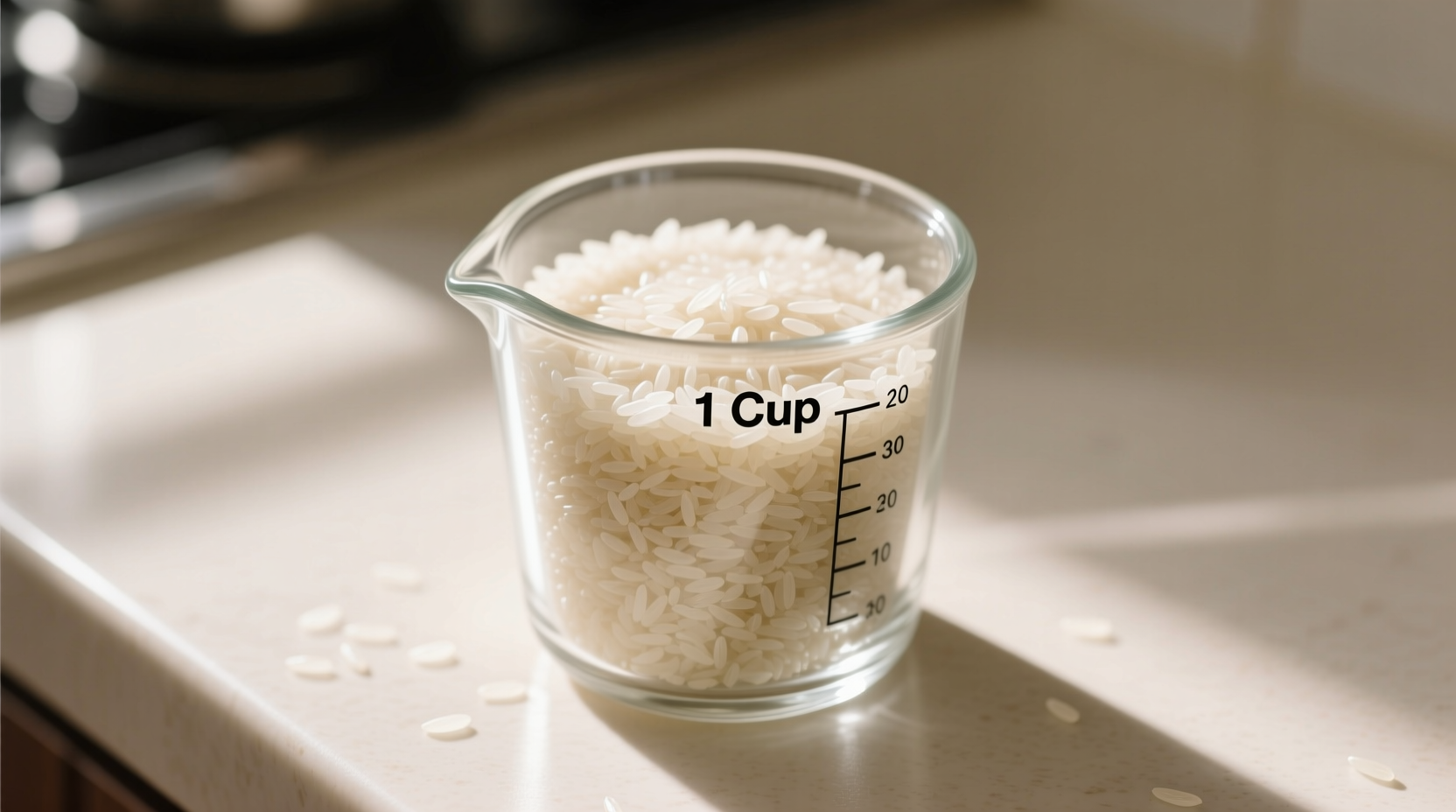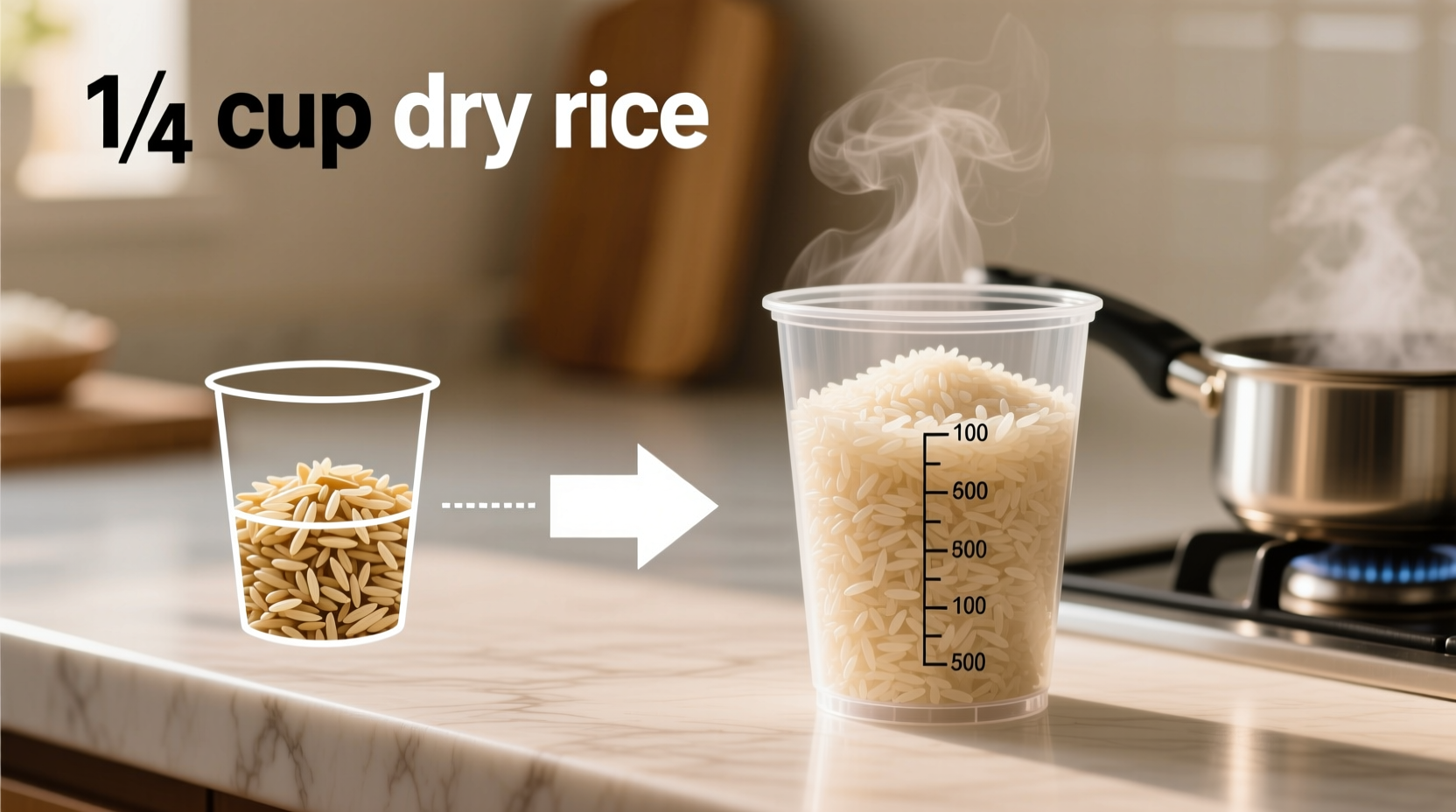One cup of cooked rice requires approximately 1/2 to 1/3 cup of dry rice, depending on the rice variety. This precise conversion ratio ensures perfect rice texture every time you cook.
Getting rice measurements right separates a fluffy, perfectly textured side dish from a mushy disappointment. Whether you're meal prepping, following a recipe, or cooking for one, understanding the dry-to-cooked rice conversion is essential kitchen knowledge that saves time, reduces food waste, and guarantees consistent results.
Why Rice Measurement Matters
Rice expands significantly during cooking as it absorbs water—a process called gelatinization. The exact expansion ratio varies by rice type due to differences in starch composition and grain structure. Getting this ratio wrong leads to undercooked grains or soupy results, wasting both time and ingredients.
| Rice Type | Dry Rice for 1 Cup Cooked | Water-to-Rice Ratio | Cooking Time |
|---|---|---|---|
| White long-grain (Basmati, Jasmine) | 1/3 cup | 1.5:1 | 15-18 minutes |
| White medium-grain | 3/8 cup | 1.75:1 | 18-20 minutes |
| Brown rice | 1/2 cup | 2:1 | 40-45 minutes |
| Short-grain (Sushi rice) | 3/8 cup | 1.25:1 | 20-25 minutes |
This conversion chart reflects data from the USDA FoodData Central, which documents how different rice varieties absorb water during cooking. The variation exists because brown rice retains its bran layer, requiring more water and longer cooking, while processed white rice expands more dramatically.
Step-by-Step Rice Measurement Guide
Follow these professional kitchen techniques for perfect rice every time:
- Measure dry rice first using a standard measuring cup (not a rice cooker cup)
- Rinse thoroughly until water runs clear to remove excess starch
- Use the correct water ratio based on your rice type (see chart above)
- Cook with lid on at a gentle simmer—never stir during cooking
- Rest off heat for 10 minutes after cooking to allow steam to finish the process

When Standard Ratios Need Adjustment
Several factors require modifying the standard dry-to-cooked rice conversion:
- Cooking method: Rice cookers often need slightly less water than stovetop methods
- Altitude: Above 3,000 feet, increase water by 15-20% due to lower boiling points
- Desired texture: For firmer rice (like in pilafs), reduce water by 10%
- Leftover considerations: Cooked rice shrinks slightly when refrigerated—add 1-2 tablespoons extra water when reheating
According to research from the Cornell University Rice Research Program, these contextual adjustments account for why many home cooks struggle with inconsistent results despite following standard ratios.
Avoid These Common Rice Mistakes
Even with the correct dry-to-cooked ratio, these errors sabotage perfect rice:
- Using a pot that's too large (causes uneven cooking)
- Lifting the lid during cooking (releases critical steam)
- Skipping the resting period (leads to uneven texture)
- Not accounting for evaporation in older pots
Meal Prep and Storage Considerations
When planning meals, remember that cooked rice:
- Keeps refrigerated for 4-6 days in airtight containers
- Freezes well for up to 6 months (portion in 1-cup servings)
- Expands slightly when reheated—add 1-2 tsp water per cup
- Loses about 10% volume when cooled and stored
Understanding how much dry rice for 1 cup cooked transforms your kitchen efficiency. By mastering these ratios and techniques, you'll consistently achieve restaurant-quality results whether cooking for one or preparing large batches. The next time a recipe calls for cooked rice measurements, you'll know exactly how much dry grain to start with—no more guessing or wasted ingredients.
How much dry rice makes 2 cups cooked?
For most white rice varieties, 2/3 cup of dry rice yields approximately 2 cups cooked. Brown rice requires about 1 cup dry for the same cooked amount due to its lower expansion rate.
Why does my rice come out mushy even with correct measurements?
Mushy rice typically results from too much water, lifting the lid during cooking, or not allowing proper resting time. Try reducing water by 1-2 tablespoons and ensure you don't stir or peek while cooking.
Does rinsing rice affect the dry-to-cooked ratio?
Rinsing removes surface starch but doesn't significantly change the expansion ratio. However, thorough rinsing prevents stickiness and improves texture without requiring measurement adjustments.
How accurate are rice cooker measurements?
Rice cooker "cups" are typically 180ml (about 3/4 standard cup). When using a rice cooker, follow its specific measuring cup and water level indicators for best results, as these account for the appliance's unique cooking environment.
Can I measure cooked rice by weight instead of volume?
Yes—1 cup cooked rice weighs approximately 200g. One cup dry rice weighs about 185g and yields 600g cooked. Weight measurements provide more consistency than volume, especially for meal prep and nutritional tracking.











 浙公网安备
33010002000092号
浙公网安备
33010002000092号 浙B2-20120091-4
浙B2-20120091-4